Explore Oregon: 13 best trips from 2022 include fire scars, sandboarding, rafting, fishing
It’s hard to believe that I’ve been an outdoors writer at the Statesman Journal for 10 years now, and contributing to The Register-Guard for 13 years.
It’s been a blur, to say the least.
Oregon's outdoors has transformed in ways I could never have imagined. The state has seen record-breaking wildfires, heat and historic numbers of people camping, hiking, fishing and skiing.
Given that transformation, this job feels more important than ever.
One of the issues, land managers have told me multiple times, isn't that there are too many people in Oregon's outdoors. The problem is people are doing the same things, going to the same places or heading into the wild underprepared or uninformed.
Oregon’s outdoors has plenty of space for everybody — and should be accessible to more people. The trick is avoiding crowds, learning how to get permits and save money when teaching kids to ski.
With that in mind, here are 13 of my favorite trips from the past year. The goal isn’t to blow up your favorite places, but to suggest unique trips that get you outdoors responsibly or that require permits and how to get them.
Some are less-visited places. Some are places that require permits. Some are popular places that can be experienced in better ways. Some are just fun.
Within this list are three trips from our two outdoors journalism interns from this past summer. It has been a point of pride that our Explore Oregon Podcast now brings in enough money to hire and pay interns to report on the outdoors each summer. That will expand to three interns in 2023.
Honorable mention: Return to Jefferson Park
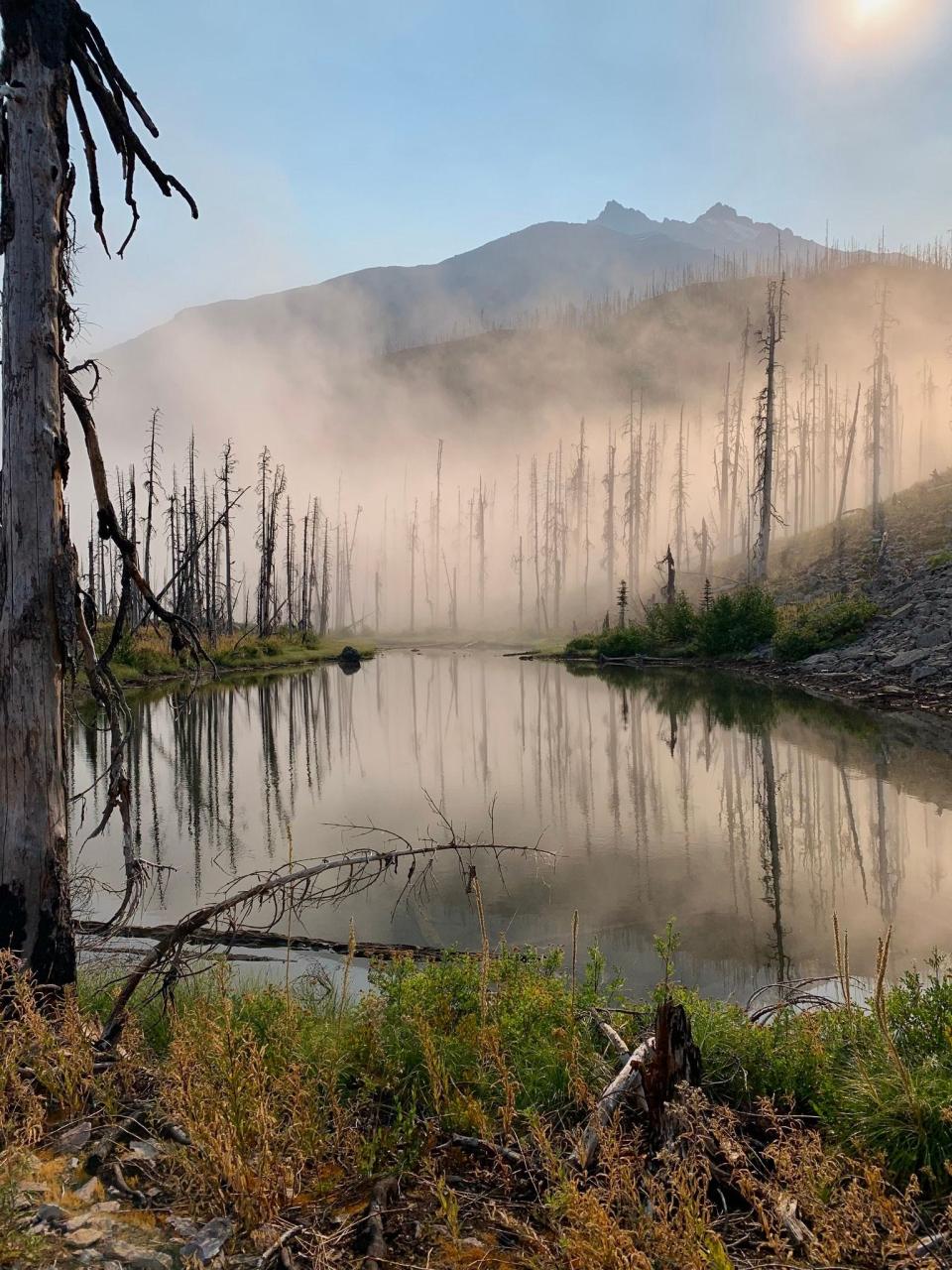
I didn’t make the trip myself, but I talked to a number of people who made the long-awaited return to Jefferson Park, the alpine paradise at the base of Mount Jefferson that was closed for two years after the Lionshead Fire roared across during the Labor Day fires of 2020. The difference this time around was that you needed a permit to enter — something that wasn't the case previously.
In many ways, this was the year people returned to the places they loved after those cataclysmic fires and found more of a mixed bag than might have been expected.
That was definitely true for Jefferson Park, which saw severe wildfire impact surrounding it — and on the trails into it — but the park itself was basically unchanged. One thing that has changed is that you now need a special permit to camp in the shadow of Oregon’s second tallest mountains.
-Zach Urness
Honorable mention: Castle Rock
This is a great early or late season mountain climb with a plethora of ways to reach the 3,800 foot summit located near Cougar Reservoir east of Eugene.
From a combination of different forest roads and trailheads, there are actually three different ways to reach the top. There’s a semi-easy route of just 2.4 miles; a moderate hike of 4.2 miles and a longer all-day trek of 12-13 miles. Each of these routes have charms.
Some of the trailheads are so low that you can access the peak even during the depths of winter (though be prepared for snow and challenging conditions).
-Zach Urness
Honorable mention: Marion Mountain in late autumn
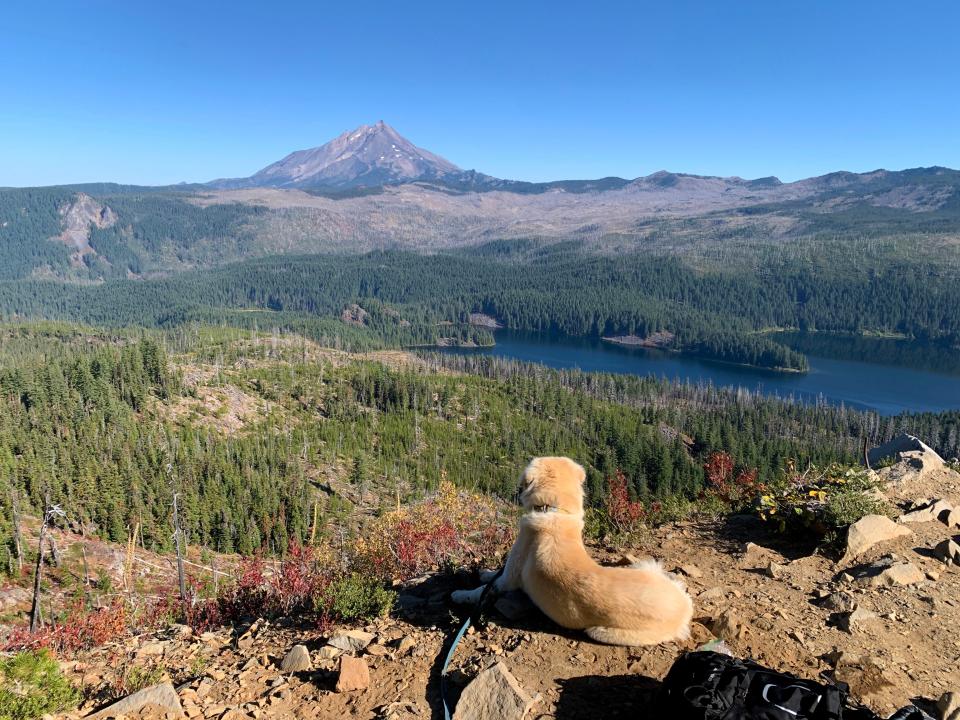
It doesn’t quite crack the top 10, but I wanted to mention a mountain peak that offers one of my favorite views in the Mount Jefferson Wilderness.
Marion Mountain offers a stunning view of Marion Lake and Mount Jefferson on one side, and Three Fingered Jack on the other. You can enjoy a quieter and less-traveled hike to the mountain’s summit by coming in lesser-traveled Pine Ridge Trailhead.
You can day-hike from this trailhead without a permit unlike more popular Marion Lake Trailhead nearby, which requires a day-use permit. However, to camp here you do need an overnight permit.
And, if you’re up for some excellent fishing and waterfall hunting, head down to Marion Lake or Marion Falls. To avoid the crowds there, travel mid-week in September or October.
-Zach Urness
10: The wildfire scars at Rocky Top and Stahlman Point
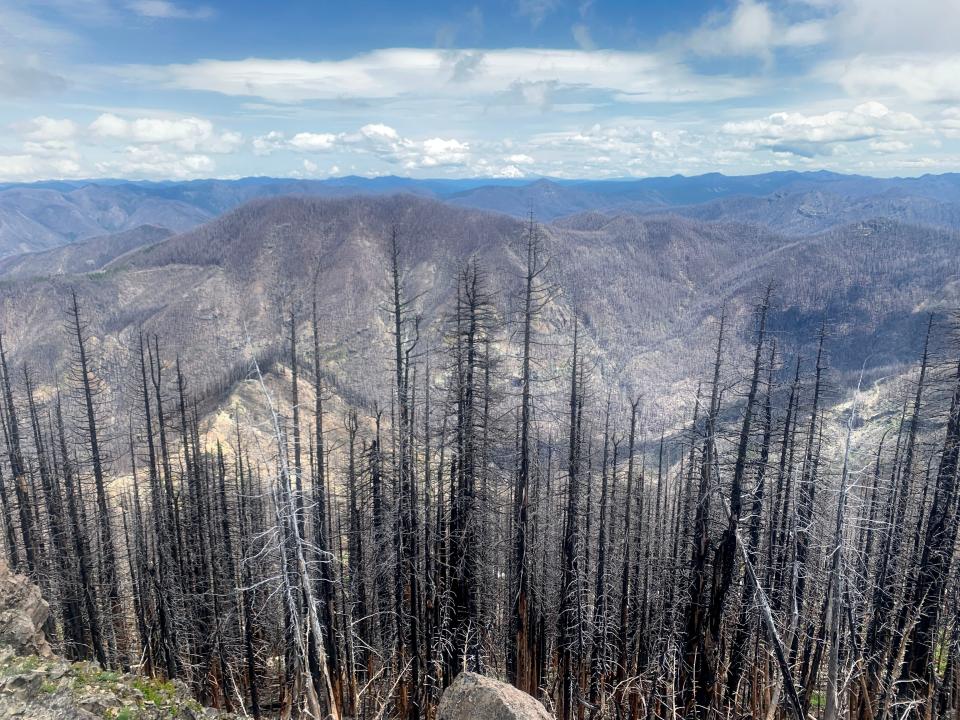
As mentioned, this was really the year that Oregonians returned to the places that burned in the Labor Day fires to see how their favorite spots held up. And, as is common with wildfire, the answers were diverse.
Nowhere is this better illustrated than in the contrast between Rocky Top and Stahlman Point trails.
They’re about 9 miles apart as the crow flies. They're both in the Santiam Canyon. Both offer knockout views of Mount Jefferson. Both burned during the Labor Day fires. But since Rocky Top was hit while the Beachie Creek Fire was burning at its hottest and most destructive, and Stahlman Point burned toward the tail end of the Lionshead Fire, when it had started to mellow out, the experience of the two places is very different.
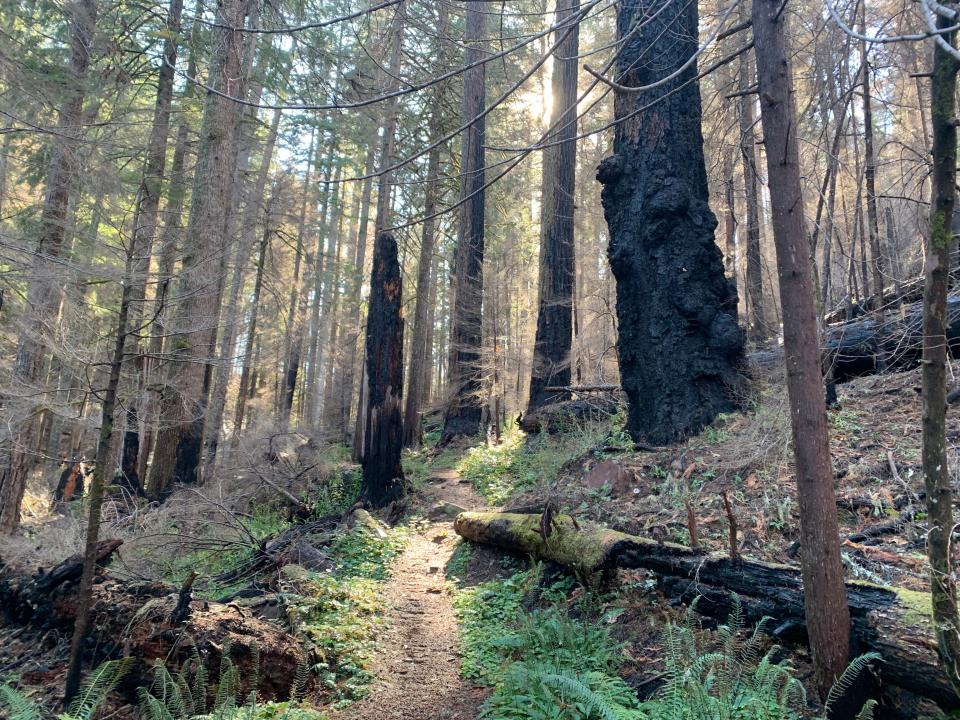
At Rocky Top, in Santiam State Forest, the surrounding forest is basically incinerated, looking across a moonscape of matchstick trees killed by high-severity fire.
At Stahlman Point, there are some blackened trees, some new openings in the forest, but what you mostly see is low intensity fire — or “good fire” because it’s actually good for the ecosystem.
The two hikes offer a fascinating contrast in the interaction of wildfire and forest.
-Zach Urness
9: Get the full cowboy experience with a horseback ride in Sisters
Sisters is one of Oregon's most iconic little towns in Oregon, a place that transformed itself from a struggling town barely on the map to a place with a bustling downtown designed to resemble the Old West.
If the old-timey signs and saloon doors aren’t enough to fuel your inner cowboy, take the western experience one step further with a trail ride at Black Butte Ranch.
To saddle up, just head about 8 miles north of downtown Sisters to Black Butte Stables. The stables are open year-round and offer a variety of trail ride options for all ages. The 90 minute trail ride takes you through a beautiful forest of ponderosa pines and aspen groves. Eventually, you’ll come across Glaze Meadow, which offers stellar views of the Cascades. During the ride, you’ll have chances to pick up the speed to a trot, and you’ll even get to cross a few streams.
Exploring the area on horseback was a wonderful way to experience the beautiful scenery and great views of the Cascades.
-Makenzie Elliott
8: Hidden treasure in southwest Oregon's Illinois Valley
For those seeking a more rugged vacation, it's hard to beat southwest Oregon’s Illinois Valley, a playground for outdoor enthusiasts tucked an hour off of I-5 south of Grants Pass and just above the Oregon-California state line.
Teeming with options for sightseeing, day trips and long-term excursions, the valley boasts some of Oregon's most diverse landscapes, ranging from arid rocky mountains to lush forests filled with life. Take a dip in the emerald waters of the Illinois River during warmer months or take a cave tour at the Oregon Caves National Monument and Preserve, stopping for a delicious lunch at locally owned Taylor's Sausage on the way home.
Spend a night in the Out n' About Treehouse Resort or raft Oregon’s wildest river — the Illinois — or go camping at Bolan Lake Campground.
-Skyla Patton
7: Matthieu Lakes with the Central Cascades permit
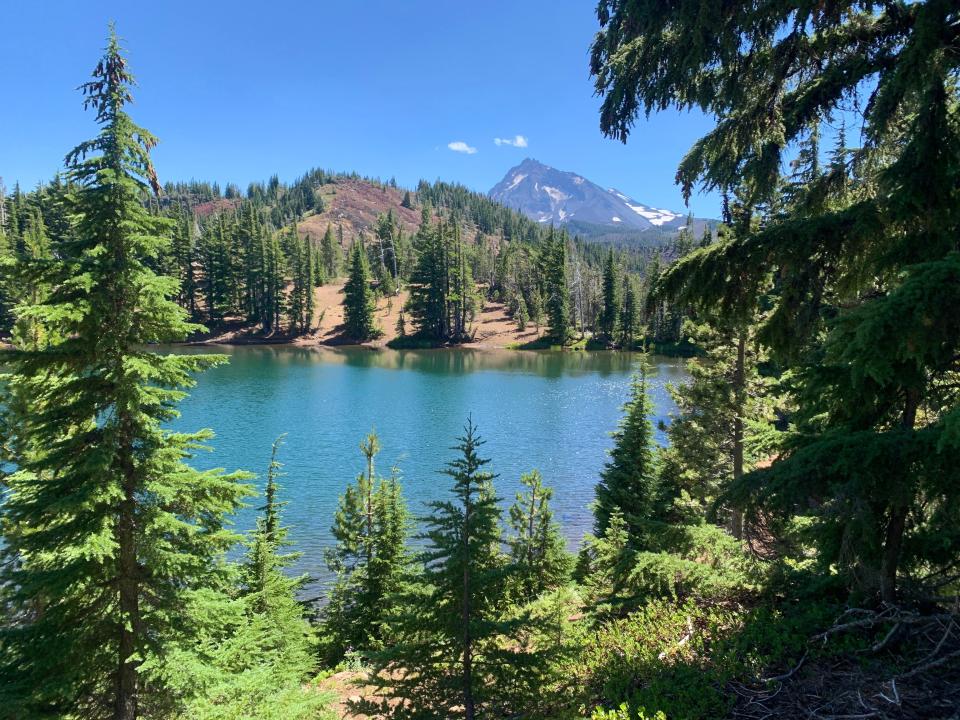
This was the second full year of the Central Cascades Wilderness permit system — which requires a permit to camp or hike into three of the state’s most popular backcountry places: the Three Sisters, Mount Jefferson and Mount Washington wilderness area.
There are only so many permits available for each trailhead, which limits the number of people who can visit, in order to combat rapidly growing crowds. I’ve written thousands of words on this topic, and it’s still an issue for those opposed and in favor, but what’s become clear is that it does reduce what I’ll call “backcountry stress.”
Matthieu Lakes is a perfect example. This pair of alpine lakes off McKenzie Pass, in the Sisters Wilderness, has 10 established campsites where you can put down a tent. Before the permit, a backpacking trip here meant rolling the dice. If it was a weekend, you might well have arrived and found yourself out of luck, with all the sites claimed.
But now, even if getting a permit is a hassle, it does basically guarantee a campsite, and that’s no small thing. We can argue about the virtue of the permit system and all its downsides, but when you’re backpacking with kids, there is nothing worse than not finding a campsite.
And oh yes, Matthieu Lakes is a stunning place to camp and especially to fish for brook trout early in the morning.
-Zach Urness
6: Sunrise skiing at Ray Benson
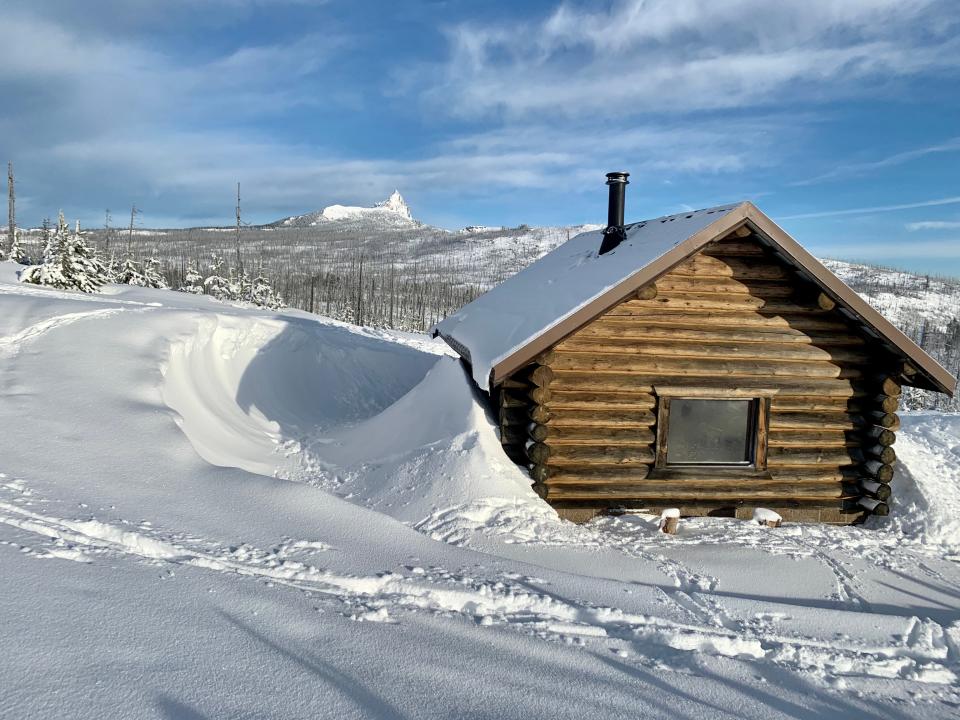
Cross-country skiing at Ray Benson sno-park’s 70 miles of trail and three warming huts has become one of my great joys over the past few winters. The multitude of options and scenery at this Santiam Pass destination is second to none — forest and views of Mount Washington abound.
The backstory of Ray Benson is also fun — it was named for a disabled Salem mechanic who’s love for snowmobiling helped inspire the creation of Oregon’s sno-park system.
Problem is, everybody loves this place. On nice weekends the parking area becomes a zoo. That’s why I’ve been leaving before dark with the goal of arriving right around sunrise. The mountains glow, the snow is less sticky and the solitude is deep.
-Zach Urness
5: Sandboarding Honeyman State Park
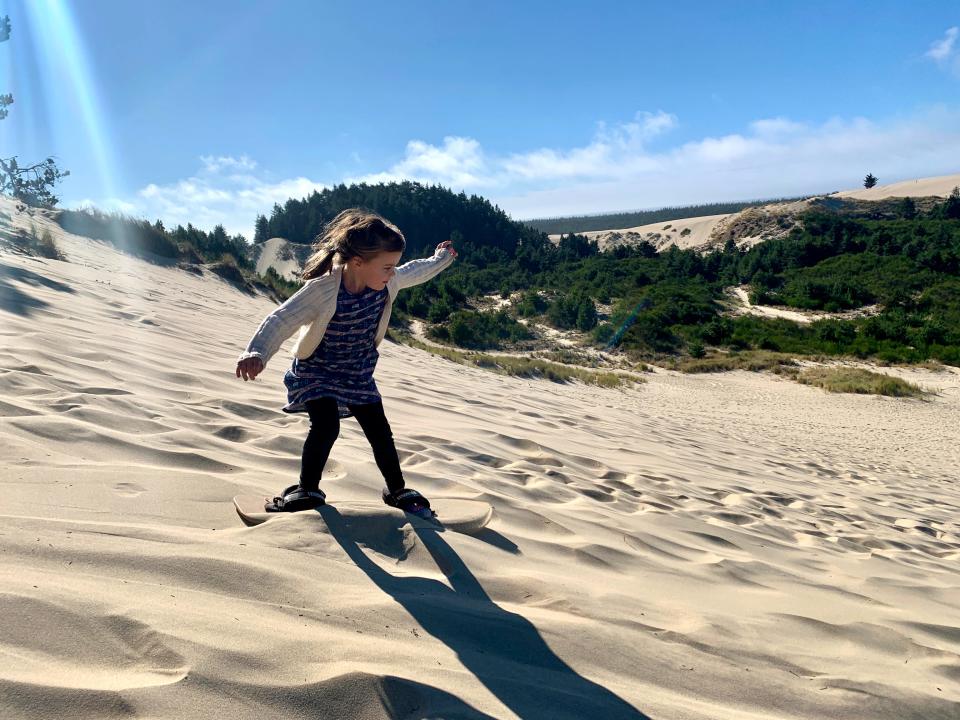
The Oregon Dunes are fun for plenty of reasons, but sandboarding might be the most unique, as I discovered with my kids this autumn while camping at Honeyman State Park outside Florence.
Sandboarding is exactly what it sounds like — basically snowboards except for on sand. There’s also sand sleds. The boards need to be waxed pretty much every trip down, and the climb to the top of steep dunes is a workout, but it’s a pretty fun experience otherwise.
We rented our boards at Sand Master Sandboarding - Park & Store, apparently the place that pioneered putting foot bindings on the boards. It’s a great spot because you can rent the boards and then go try them out on the dunes right behind the shop.
Our favorite place to ride the sand is Honeyman State Park, which is also a good family camping spot. Cleawox Lake, within the state park, seems almost made for sandboarding. There’s a giant dune to ride down and a very swimmable lake below for relaxing. It’s about as good as it gets for a family adventure day.
-Zach Urness
4: Surfing the Oregon Coast (even in winter)
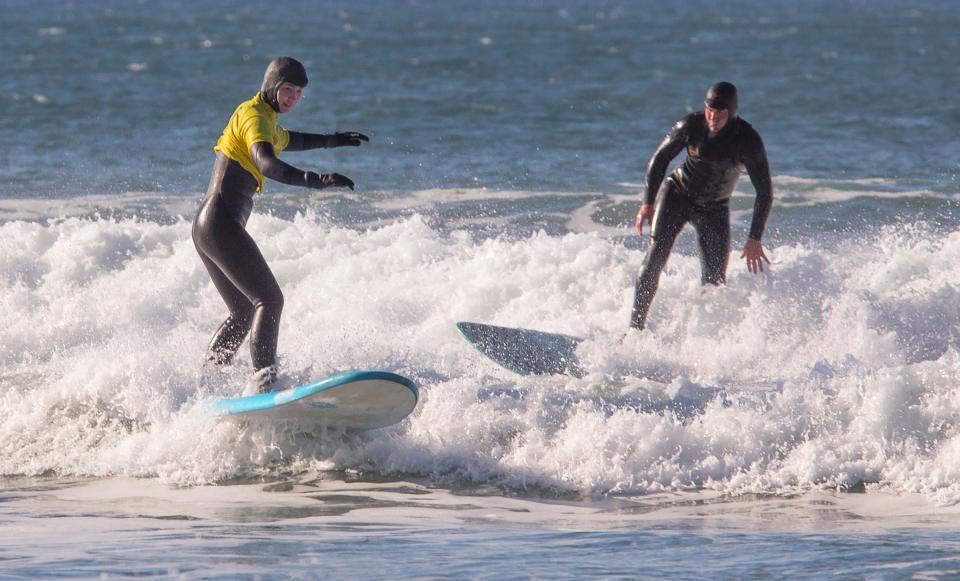
Believe it or not, the Oregon Coast is a surfer’s paradise. It’s an awesome place for people of all levels to grab a surfboard and catch some waves.
Beginner surfers can schedule a lesson with a local surf shop — like Ossies surf shop in Newport — to learn the basics of surfing, like how to safely navigate the water, how to lay on the board and, eventually, how to stand up.
Don’t let the cold scare you. All you need is a wetsuit and the proper equipment and you’re good to go — even in the colder months. In fact, winter can be a great time to surf in Oregon. Summer offers more consistent waves and weather, but winter waves can be more powerful.
Whether you’ve been surfing for years or this is your first time on a board, the Oregon Coast offers awesome opportunities to ride waves year-round.
-Makenzie Elliott
3: Carl Lake, South Cinder and a very sad story
Up next is a story of both a cool place to visit in the Mount Jefferson Wilderness and a uniquely sad yet inspiring story that involved YouTube/reality star Heavy D of the show "Diesel Brothers."
No, really.
Here's what happened. First off, I went on a trip I'd wanted to do for a while — backpacking to Carl Lake on the east side of the Jefferson Wilderness before climbing 6.800-foot South Cinder Cone. It’s a 14-mile trek round-trip with about 2,500 feet of climb all totaled. It's a near-perfect camp-and-climb adventure with some fishing and exploring thrown in. Once again, you'll need an overnight permit for this trip.
Late last autumn I headed out, backpacking to Carl Lake and making camp, fishing and generally enjoying life. The next morning I woke up early and headed up from Carl Lake to the Pacific Crest Trail and then to the off-trail route up South Cinder Cone. But as I started to climb, I noticed something odd on the side of it the mountain.
As I hiked up the peak, it became clear it was a plane wreck. I figured it was an old wreck. But as I got closer, it became clear it was not an old wreck, but a pretty new one. From the summit, I had cell service and searched for news of plane crashes in the area, coming across reporting about a crash from just a few days earlier.
Curious about what happened and how the Forest Service would get the wreckage down, I came across the GoFundMe page of the family of Wayne Wirt, 67, who died when his Piper Cherokee crashed on South Cinder Cone. I was struck by the fact that his family was being forced to pay to remove the wreckage and come up with the plan themselves. I got in touch with the family and wrote a story about it. The story generated quite a lot of interest and apparently made its way to Heavy D. He offered to remove the wreck free of charge. Ironically, the family — including Wayne — were big fans of his already. So I wrote about it. Finally, the YouTube episode was posted, showing how they used helicopters to remove the debris from the side of the mountain. It's pretty good and even gets into the value of the Wilderness Act and the need to get permits to protect wilderness values.
2: Teaching kids to ski on a budget
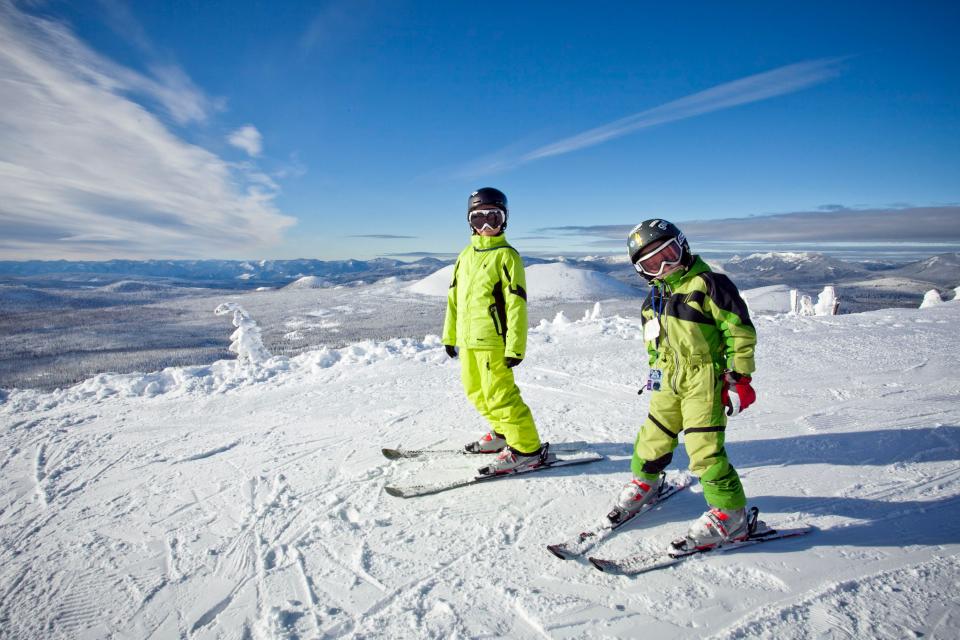
The process of getting kids on the slopes is not easy, simple or cheap. It requires gear. It requires lessons. It requires plenty of driving. And most of all it requires money — more than you probably want to spend if you're living on a tight budget. But if you can get over the hump, there are few things more fun.
Last winter my goal was getting my then 5 and 7 year old out on the slopes. We managed to pull it off and it really was one of the most rewarding things I've done. But I learned a lot along the way.
First, for gear, a great option are season-long rentals — where you rent gear for the season and then give it back because (of course) kids grow pretty quick. The most affordable place I found was Peak Sports in Corvallis, which charged $125 for kids and $175 for adults for all the gear for the season.
Second, overall, Hoodoo Ski Area was the cheapest option I could find. It was free for both kids (7-and-under) and I could go night skiing for just $35. Pretty hard to beat. But there are a lot of other deals to be had including:
Free lift tickets for kids 12 and under at Mt. Bachelor
Free Power Kid Season Pass at Willamette Pass for kids 12 and under
Free tickets for kids 6 and under at many resorts
On-mountain day care for kids 6 weeks and older offered at Mt. Hood Meadows and Mt. Bachelor
Overall, I like Hoodoo for the price and because it's not a super intimidating place to go — it's small and comfortable. But that's just my experience.
Third, you really should bite the bullet and get your kids at least one ski lesson that is not from you. Most kids are going to tune their parents out to a point and frankly, and I just found they learned much quicker and had more fun with the young, fun, enthusiastic pros that teach lessons. One good example was the instructor for my 5-year-old who clearly diagnosed that she needed an edgie wedgie — which helps smaller kids keep their skis together while doing a “pizza” to slow down.
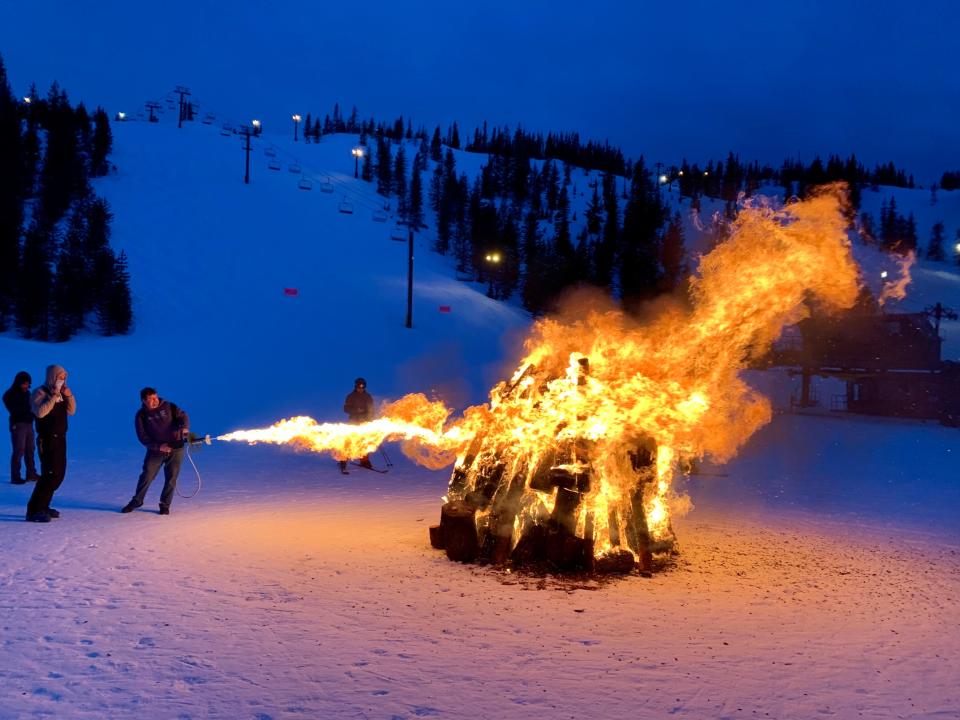
Fourth, the trick was to go on a regular basis — at least every other weekend. That way, their skills can improve and everyone gets more comfortable. We picked Friday nights as our best option because night skiing was cheaper and fun, and they had music in the lodge.
Finally — and this was driven home in a podcast I did with a ski instructor — keep the experience fun no matter what. If the kids are cold and want to stay in the lodge all the time, do it. If they just want to ski the bunny hill all day, hey, that’s the way it goes. But it’s all about making sure they have fun.
1: John Day rafting and smallmouth bass
Speaking of getting kids into the outdoors, my favorite experience for the past few years now has been rafting, camping and fishing on the John Day River in eastern Oregon.
The trips can be anywhere from six to three days, depending where you start and end. And it does require getting a permit and having the ability to pack a raft with camping gear. But just like skiing, when everything comes together — it’s magic.
The John Day’s canyons feel like a small-scale Grand Canyon. The water is warm enough to swim. Some campsites have sandy beaches and trails to explore nearby wildlife.
But most of all, the fishing is really good, and you don’t have to feel bad about harvesting and eating the river’s vast population of smallmouth bass — in fact it’s encouraged.
Explore Oregon Podcast: Explore Oregon Podcast: John Day River features iconic float trip; here's how to do it
Smallmouth bass were introduced to the river as a sport fish in 1971, and they've taken off like wildfire as the John Day's climate has turned warmer and drier. Now, they’re so numerous that they’re becoming a problem, said state officials, who eliminated the bag limit in 2016 — meaning you can catch and keep as many as you want.
“If you’re really working at it, people catch 100 bass in one day with very little problem,” said Stephan Charette, the John Day District fish biologist for the Oregon Department of Fish and Wildlife. “The goal is for people to catch the small- to medium-sized ones and remove them, which helps improve the habitat and keeps them from venturing off to find new habitat and spreading into other parts of the river.”
Indeed, since we were fishing for a good cause, I decided to come up with some good smallmouth bass recipes, which aren’t the most popular fish for eating. The best option seems to be fish tacos. “Smallmouth bass kind of have a reputation for not being great eating,” said wilderness chef Kayla Sulak, in an episode of the Explore Oregon Podcast. “But for some reason, with fish tacos they’re really good. Like I’ve compared them side by side with other fish in tacos and this is one time when their flavor seems to come through and just tastes better.”
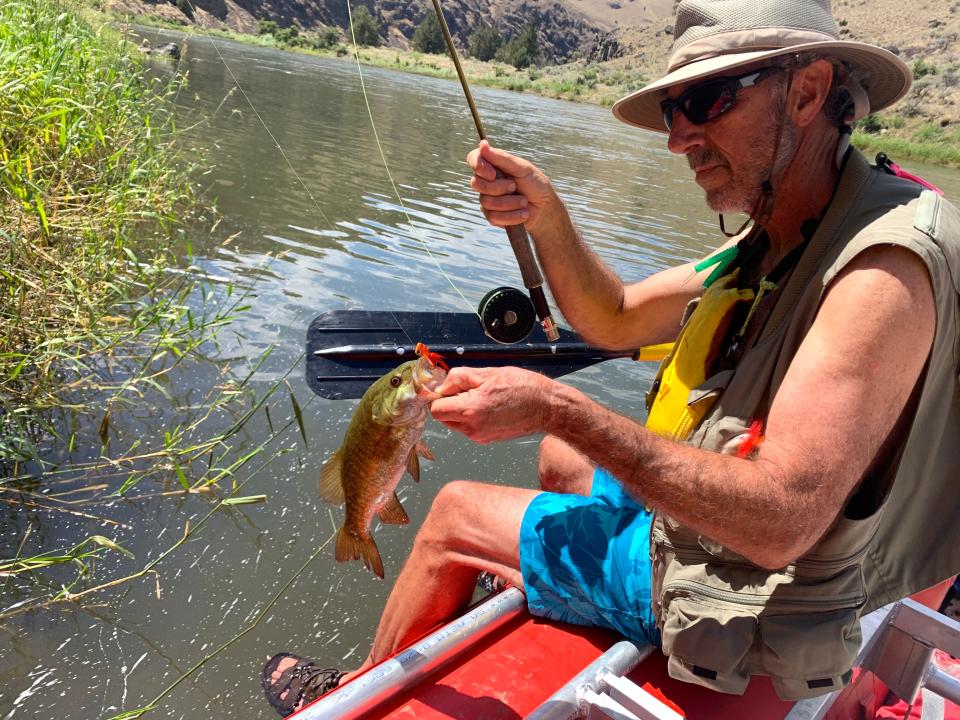
Zach Urness has been an outdoors reporter in Oregon for 15 years and is host of the Explore Oregon Podcast. To support his work, subscribe to the Statesman Journal. Urness is the author of “Best Hikes with Kids: Oregon” and “Hiking Southern Oregon.” He can be reached at zurness@StatesmanJournal.com or 503-399-6801. Find him on Twitter at @ZachsORoutdoors.
This article originally appeared on Salem Statesman Journal: Best Oregon outdoors trips in 2022: Fishing, rafting, skiing

